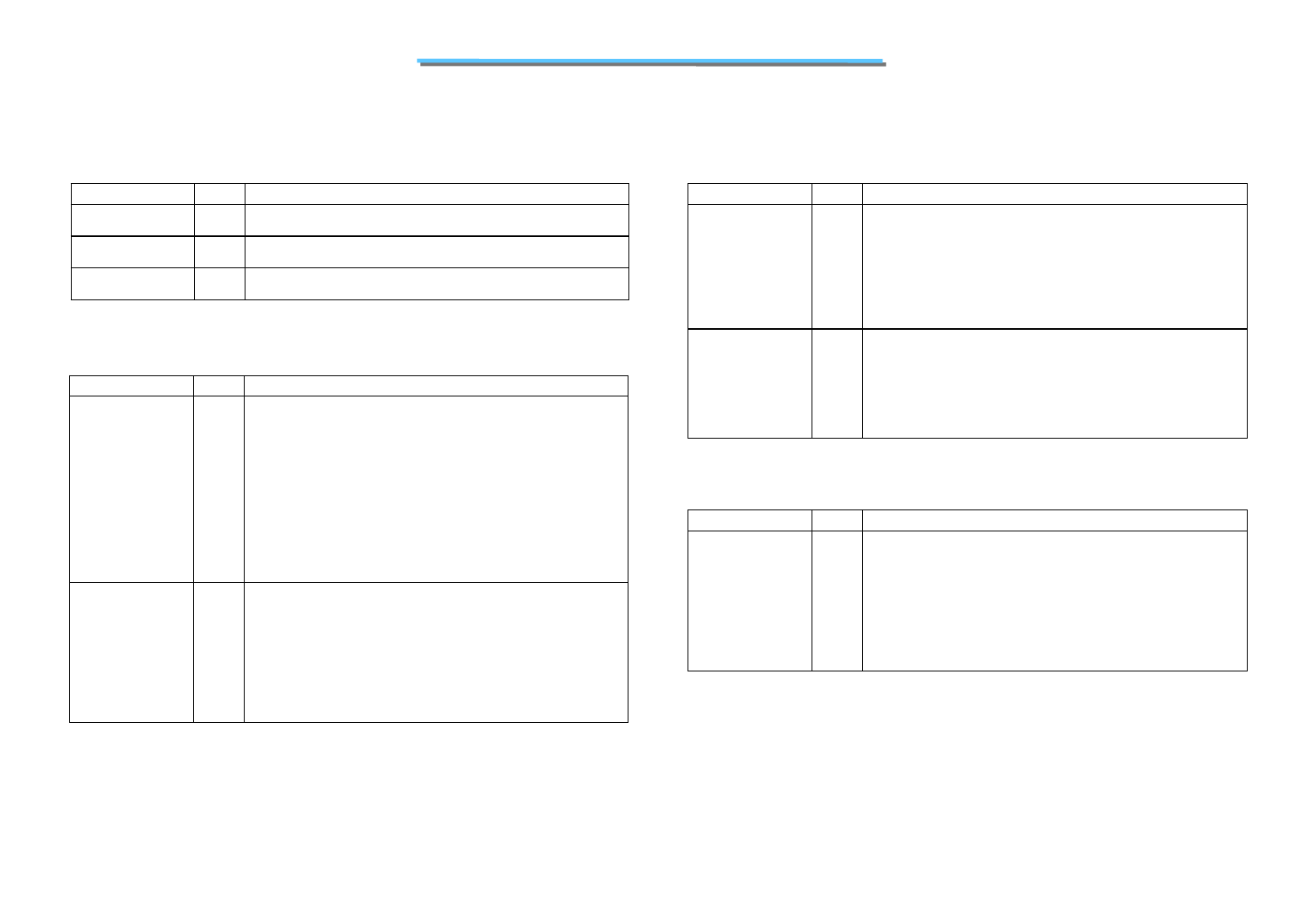
120
8170 N/B MAINTENANCE
5.2 Intel 82845(Brookdale Memory Controller HUB)
Hub Interface Signals
Name Type Description
HI_[10:0]
I/O
CMOS
Hub Interface Signals: Signals used for the hub interface.
HI_STB
I/O
CMOS
Hub Interface Strobe: One of two differential strobe signals used to
transmit or receive packet data over the hub interface.
HI_STB#
I/O
CMOS
Hub Interface Strobe Compliment: One of two differential strobe
signals used to transmit or receive packet data over the hub interface.
AGP Addressing Signals
Name Type Description
PIPE#
I
AGP
Pipelined Read: This signal is asserted by the AGP master to
indicate a full-width address is to be enqueued on by the target using
the AD bus. One address is placed in the AGP request queue on each
rising clock edge while PIPE# is asserted. When PIPE# is deasserted,
no new requests are queued across the AD bus.
During SBA Operation: Not Used.
During FRAME# Operation: Not Used.
PIPE# is a sustained three-state signal from masters (graphics
controller), and is an MCH input.
Note: Initial AGP designs may not use PIPE# (i.e., PCI only 66
MHz). Therefore, an 8 k. pull-up resistor connected to this pin is
required on the motherboard.
SBA[7:0]
I
AGP
Sideband Address: These signals are used by the AGP master
(graphics controller) to place addresses into the AGP request queue.
The SBA bus and AD bus operate independently. That is, a
transaction can proceed on the SBA bus and the AD bus
simultaneously.
During PIPE# Operation: Not Used.
During FRAME# Operation: Not Used.
Note: When sideband addressing is disabled, these signals are
isolated (no external/internal pull-up resistors are required).
NOTE: The above table contains two mechanisms to queue requests by the AGP master. Note that
the master can only use one mechanism. The master may not switch methods without a full
reset of the system. When PIPE# is used to queue addresses the master is not allowed to
queue addresses using the SBA bus. For example, during configuration time, if the master
indicates that it can use either mechanism, the configuration software will indicate which
mechanism the master will use. Once this choice has been made, the master will continue to
use the mechanism selected until the master is reset (and reprogrammed) to use the other
mode. This change of modes is not a dynamic mechanism but rather a static decision when
the device is first being configured after reset.
AGP Flow Control Signals
Name Type Description
RBF#
I
AGP
Read Buffer Full: RBF# indicates if the master is ready to accept
previously requested low priority read data. When RBF# is asserted,
the MCH is not allowed to initiate the return low priority read data.
That is, the MCH can finish returning the data for the request
currently being serviced. RBF# is only sampled at the beginning of a
cycle. If the AGP master is always ready to accept return read data,
then it is not required to implement this signal.
During FRAME# Operation: Not Used.
WBF#
I
AGP
Write-Buffer Full: Indicates if the master is ready to accept fast
write data from the MCH. When WBF# is asserted, the MCH is not
allowed drive fast write data to the AGP master. WBF# is only
sampled at the beginning of a cycle. If the AGP master is always
ready to accept fast write data, then it is not required to implement
this signal.
During FRAME# Operation: Not Used.
AGP Status Signals
Name Type Description
ST[2:0]
O
AGP
Status: ST[2:0] provides information from the arbiter to an AGP
Master on what it may do. ST[2:0] only have meaning to the master
when its G_GNT# is asserted. When G_GNT# is deasserted, these
signals have no meaning and must be ignored. Refer to the AGP
Interface Specification, Revision 2.0 for further explanation of the
ST[2:0] values and their meanings.
During FRAME# Operation: These signals are not used during
FRAME#-based operation, except that a ¡¥111¡¦ indicates that the
master may begin a FRAME# transaction.


















